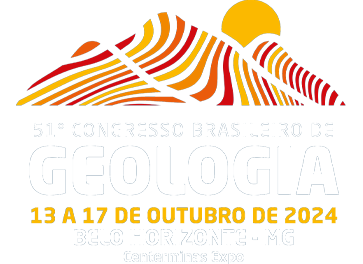Dados da Submissão
Título
DECIPHERING THE MAGMATIC-HYDROTHERMAL EVOLUTION OF THE AU-CU LAVRA VELHA DEPOSIT (BAHIA, BRAZIL) THROUGH TOURMALINE CHEMISTRY.
Texto do resumo
The Au-Cu Lavra Velha deposit, located in the northern portion of the São Francisco Craton in Bahia, Brazil, is confined to the Rhyacian Ibitiara Granite (U-Pb: 2091 ± 6.6 Ma). The ore body occurs as massive and sulfide-rich breccias and iron oxide veins, accompanied by different hydrothermal phases, including an uncommon advanced hydrolytic alteration. Furthermore, a key feature characteristic of Lavra Velha is the presence of tourmaline in the plutonic rocks responsible for the formation of the deposit, together with the hydrothermal phases accompanying the gold mineralization. This study gathers multiple techniques, such as petrographic descriptions and chemical data (EPMA and SEM) of tourmaline, sulfides, and white mica, to constrain the fluid sources and infer the evolution of late magmatic to hydrothermal phases.
The deepest part of the system shows an incipient albite-quartz association. It is followed by a significative input of quartz-tourmaline-allanite, accompanied by massive sulfides and stockwork at depth and Fe-oxides breccias and veins upwards in the system. The distal part of the system is characterized by a pervasive chlorite-carbonate-epidote-quartz-magnetite association. The shallower domain, conversely, comprises white mica enriched in Cr-Ba, coexisting with euhedral octahedral magnetite, further replaced by hematite (martite).
According to the paragenetic association and crosscut relationships, five tourmaline types were identified: coarse-grained tourmaline in granite (Tur I), fine-grained within sulfide breccias (Tur II), very fine-grained crystals in Fe-oxides veins and breccias (Tur III), fine-grained crystals associated with white mica (Tur IV), and late quartz-tourmaline-magnetite veins (Tur V). Chemically, the tourmalines of Lavra Velha belong mainly to the alkali group with a dravite composition. In contrast, Tur IIIc and Tur IV are slightly more enriched in Fe, towards the shorlitic compositional field. The exchange vectors that dominate are FeMg-1 and (□Al3+)(Na, R2)-1, with no contribution of the (Fe2+Fe3+)(MgAl)-1 exchange vector, thus suggesting low Fe3+/Fe2+ ratios, favoring reduced conditions. According to the trace elements, two groups are distinguished: the first, enriched in Co, Ni, Sr, and Ga (Tur I, Tur IIIc, Tur IV, and Tur V), and the other, enriched in Li, Sn, Cu, and Sc (Tur II and Tur IIIb), with Cr and V roughly enriched in Tur IV.
Sulfide minerals such as pyrite, arsenopyrite, tennantite, chalcopyrite, galena, sphalerite, and Bi-minerals, along with gold and Fe-oxides, represent a unique association. The chemical analysis of sulfides indicates enrichment in Co, Bi, As, Cu, and Au, and Th, U, and REE, as thorite, uraninite, and monazite were recognized by SEM.
Based on our comprehensive analysis of mineral paragenesis and geochemistry, Lavra Velha has been interpreted as an iron oxide-copper-gold (IOCG) deposit. The variable enrichments in granitophile elements and transition metals in tourmaline suggest a mixed fluid source controlled by fluid-rock interaction between magmatic-hydrothermal fluids and the country rocks. These findings not only contribute to our understanding of the ore-forming processes at the Au-Cu Lavra Velha deposit, but also provide valuable insights into the metallogenesis of the São Francisco Craton.
Palavras Chave
Tourmaline; Au-rich IOCG; mineral chemistry; Fluid Source; granite-related
Área
TEMA 09 - Recursos Minerais, Metalogenia, Economia e Legislação Mineral
Autores/Proponentes
Valentina Bocanegra Olivera, Maria Emilia Schutesky, Claudinei Gouveia de Oliveira
